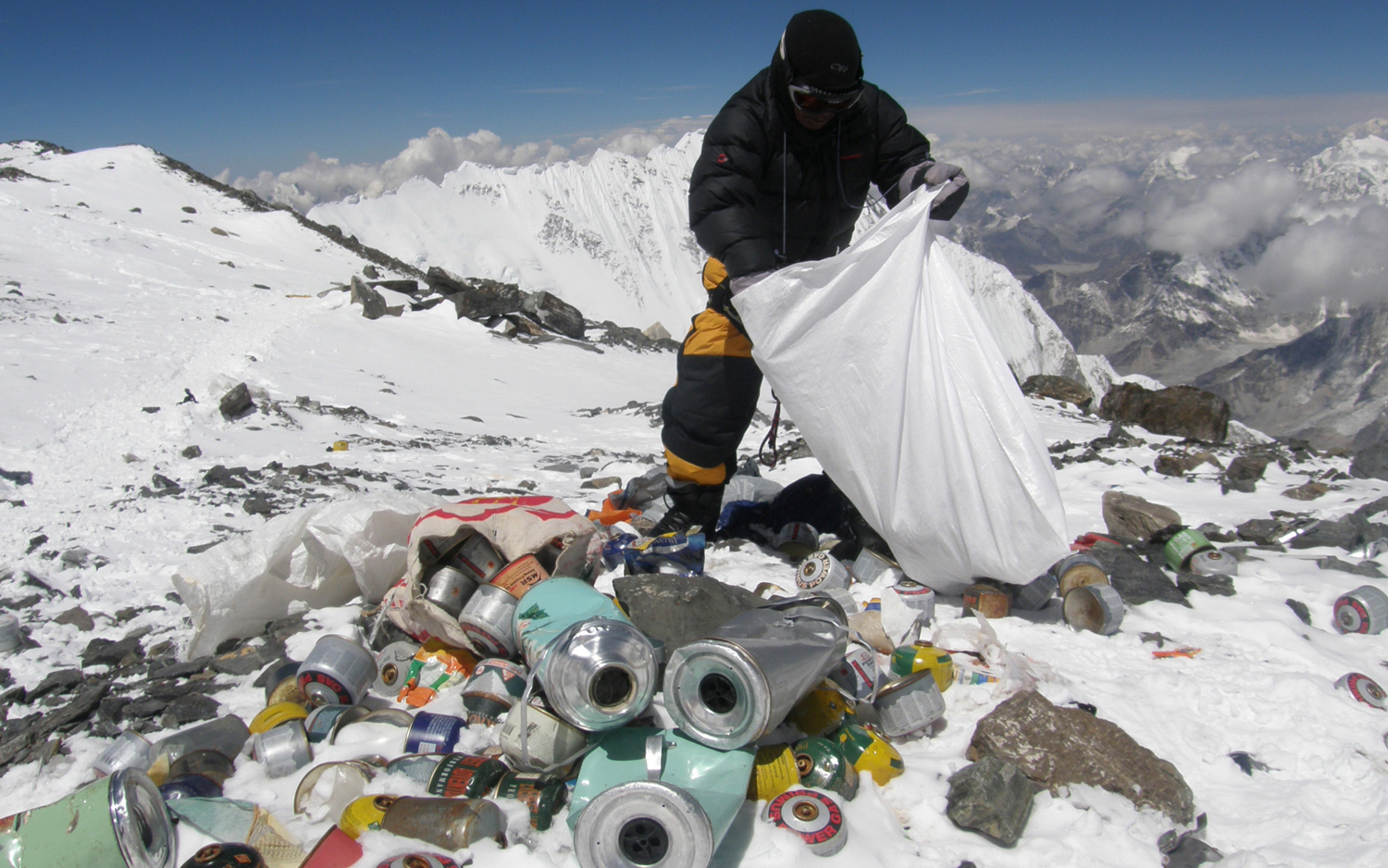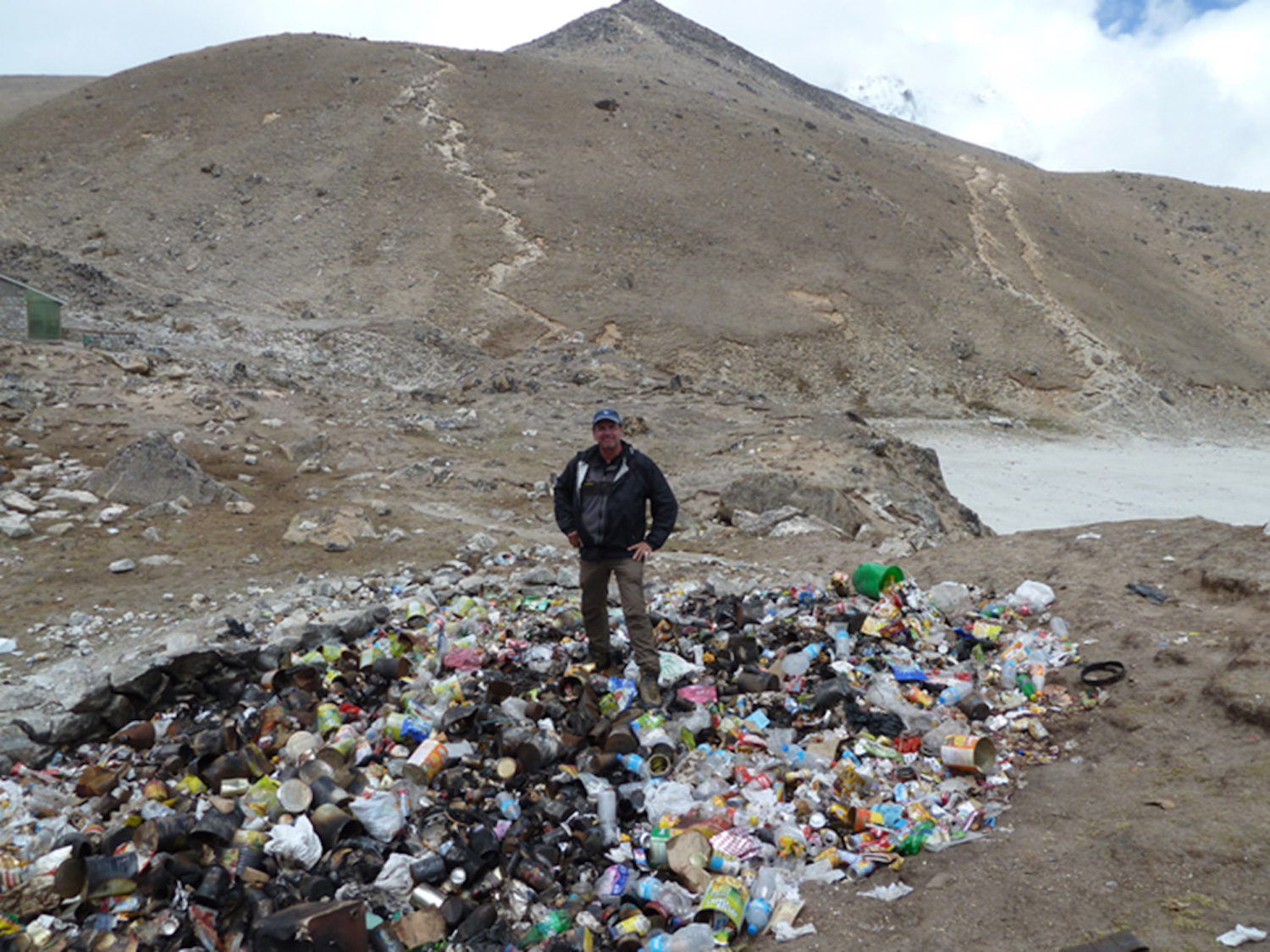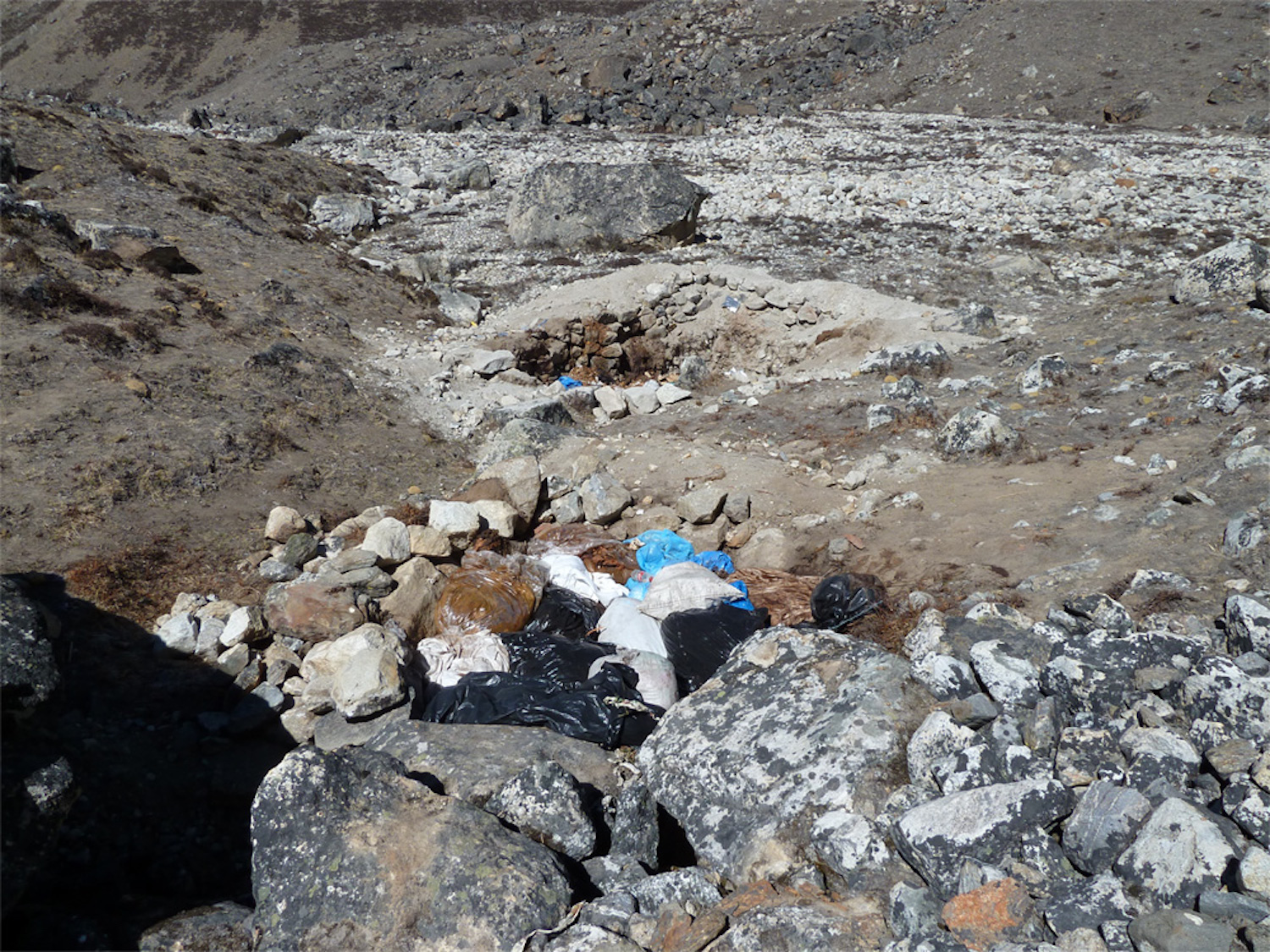How Much Trash Is on Mount Everest?

Mount Everest has a mountain of a problem: human waste. And not just leftover camping meals, beer and fuel cans, but human poo, too.
So, how much poopy and other garbage calls the planet's highest mountain home?
A Tech Times story describes the mountain as "the world's highest garbage dump." But Alton Byers, a mountain geologist at the Institute for Arctic and Alpine Research at the University of Colorado Boulder, said this description is not entirely accurate. The problem, he told Live Science, is worse in areas off the mountain than on it. In surrounding areas, you'll find dozens of landfills at various lodges and villages throughout Sagarmatha National Park, where Mount Everest resides.
The peak of Mount Everest rests at 29,029 feet (8,848 meters) above sea level, on the northern edge of Sagarmatha National Park, within the Khumbu region of Nepal. Everest is part of the Himalayas, a mountain range in Asia stretching about 1,500 miles (2,400 kilometers) across the countries of Bhutan, India, Nepal, China, Pakistan and Afghanistan. The range resulted from the Indian subcontinent crashing into the Tibetan plateau 40 million to 50 million years ago, according to the U.S. Geological Survey.
In 1922, several mountaineers and others who were part of the British Mount Everest expedition made the first attempt to reach the top of the world, but were unsuccessful. In 1953, Edmund Hillary and Tenzing Norgay became the first people to successfully reach the summit. Since then, thousands of adventurers have followed in the expedition's footsteps. In the late 1990s, Everest became a major destination for adventure tourists. More recently, Sagarmatha National Park has seen upwards of 150,000 visitors every year, with several hundreds attempting an Everest climb, according to Byers. [Photos: The World's Tallest Mountains]
Climbers traveling to the bottom of the majestic mountain for the first time might be surprised to find half-buried fluorescent tents, fuel bottles and other miscellaneous pieces of old camp sites strewn about the base camps. For the most part, other climbers and porters will clean up the camp sites before the climbing season ends, Byers said. "It's remarkable how clean they've been able to keep it of litter," he said. The real problem is what happens with that litter.

What goes up should come down
For over three decades, Byers has studied alpine conservation and restoration in the Nepal Himalayan region. He said there are two types of garbage in the Everest region.
Sign up for the Live Science daily newsletter now
Get the world’s most fascinating discoveries delivered straight to your inbox.
The first kind is litter from climbers that is strewn from base camps all the way up to the summit. "That's what you read about in these press releases," he said. That trash is primarily managed by the Sagarmatha Pollution Control Committee (SPCC), a nonprofit and nongovernment organization that does its best to keep the Khumbu region clean. With support from locals, the SPCC cleans and maintains several climbing routes. The organization also installed over 70 trash containers along trails and provides door-to-door garbage collection in some of the larger villages.
But the SPCC's efforts are limited, and waste-management rules aren't well-enforced. Troy Aupperle, an experienced mountaineer who's climbed Everest twice and summitted once, told Live Science that, compared with other "managed" mountains he's climbed, Everest is a free-for-all. "Compare it to Denali," the 20,310-foot (6,190 m) mountain in Alaska, he said. "They grill you — 'What have you done?' 'Are you worthy of climbing this mountain?' Then, they lay out all these ground rules." On Everest, however, he said, "There's no rules, no accountability, no nothing."
Aupperle said he doesn't think visiting climbers are concerned with getting their trash back down the mountain. "You barely have enough energy to get yourself off the mountain, so anything you don't have to carry or can get rid of, you just off-load so you can get down," Aupperle said. But he was impressed when he witnessed a crew of Nepalese climbers clean up a crashed Russian helicopter, carrying it down the mountain piece by piece, he said.

The world's highest landfills
Byers said the second type of garbage is generated by the hundred or so lodges in towns throughout the Khumbu region. Lodge owners bury what they consider burnable garbage in pits, he said. The pits are anywhere from 270 square feet to 2,150 square feet (25 to 100 square m), and Byers estimated that there are "dozens, maybe hundreds" of them.
Within those pits are thousands of tons of solid waste: plastic, aluminum beer cans, glass whiskey bottles, paper products and more. When burned, the garbage releases poisons in the air, and once buried, it leaches toxic chemicals into the water, Byers said. He said he suspects that the lodge owners aren't interested in recycling, because it's expensive. "If it means losing money, they're not going to do it," he said.
Yet another major problem throughout the region is human excrement. Local climbers are hired to bring the poop down in barrels from base camps and dump it into pits; the waste then washes downstream during monsoon season in the summer. Byers estimated that over 12,000 lbs. (5,400 kilograms) of human waste from the Everest base camps results from the diarrhea and other intestinal problems that so many visitors experience each year because the waste isn't completely filtered from the water supply.

Some possible solutions
The trash problem around Everest might be enormous, but it's not hopeless. Out of the thousands of tourists that visit annually, a few have returned to do what they can to help clean up the park in an efficient and affordable way.
The Mount Everest Biogas Project, for example, focuses on cleaning up Gorak Shep, a village near Mount Everest in Sagarmatha National Park, located at 17,000 feet (5,180 m) elevation. The village can be reached only by a strenuous six-day hike from the nearest airport, states the biogas project's website. There are no electrical, sanitation or water-supply systems in the town, but all human waste from several base camps gets brought back to this village and placed in a landfill.
The project aims to redirect human waste to an anaerobic digester system, which is described on the project's website as "a large tank where microorganisms feed on a mixture of water and bacteria found in organic waste, breaking down the waste and producing two by products: methane and a pathogen-reduced effluent." The system would provide a more environmentally friendly way of dealing with human waste.
Another effort to fix the trash problem comes from Sagarmatha next, an organization that aims to create art out of trash collected from Sagarmatha National Park. The group has plans to build a center near the town of Namche Bazaar that will help with waste management, art and community development.
The efforts from these organizations are promising, but there's still plenty of room for more, Byers said. "Everest base camp cleanups should continue," he said. "But we've got to figure out ways to recycle."
Original article on Live Science.

Kimberly has a bachelor's degree in marine biology from Texas A&M University, a master's degree in biology from Southeastern Louisiana University and a graduate certificate in science communication from the University of California, Santa Cruz. She is a former reference editor for Live Science and Space.com. Her work has appeared in Inside Science, News from Science, the San Jose Mercury and others. Her favorite stories include those about animals and obscurities. A Texas native, Kim now lives in a California redwood forest.









